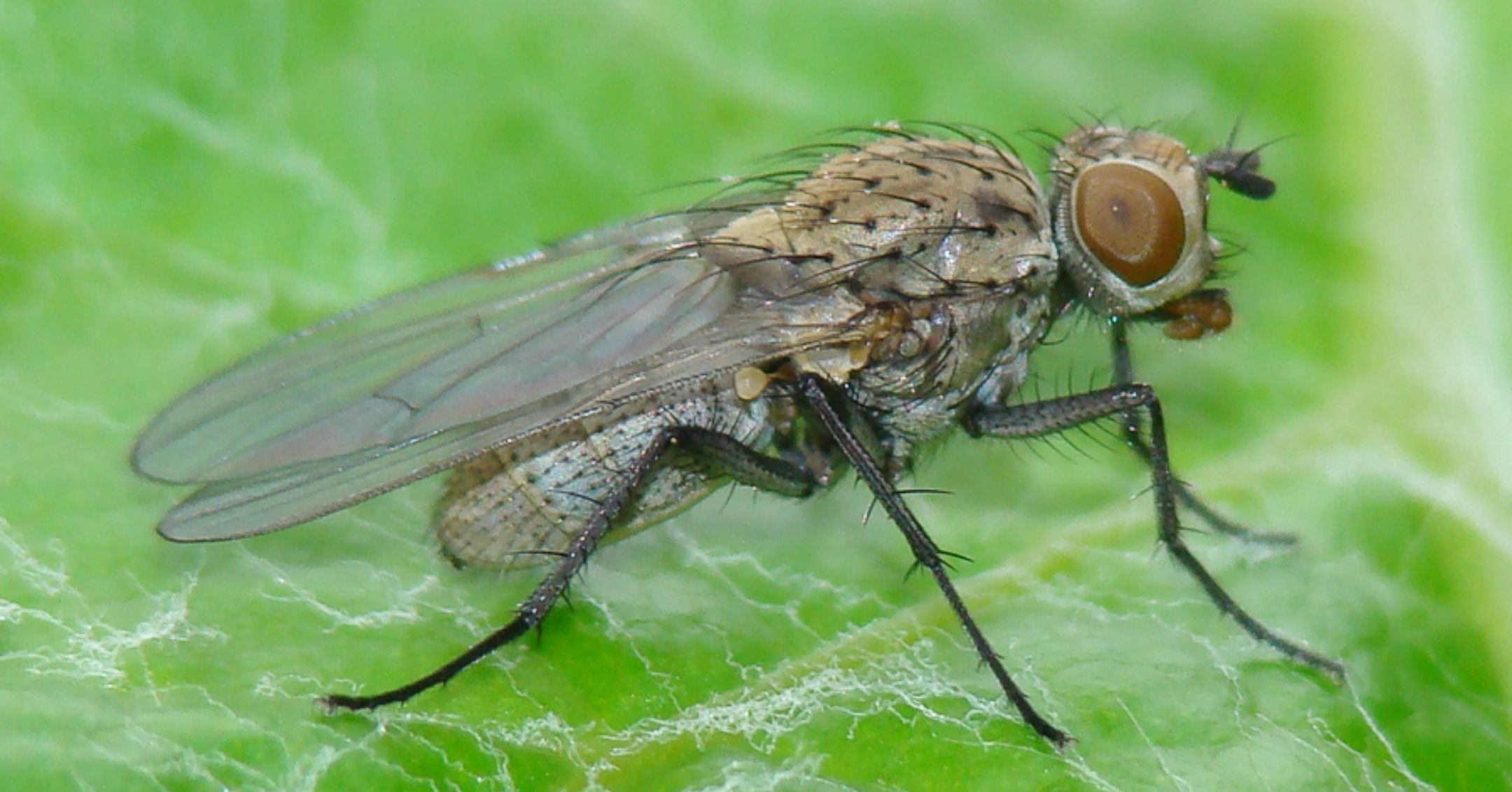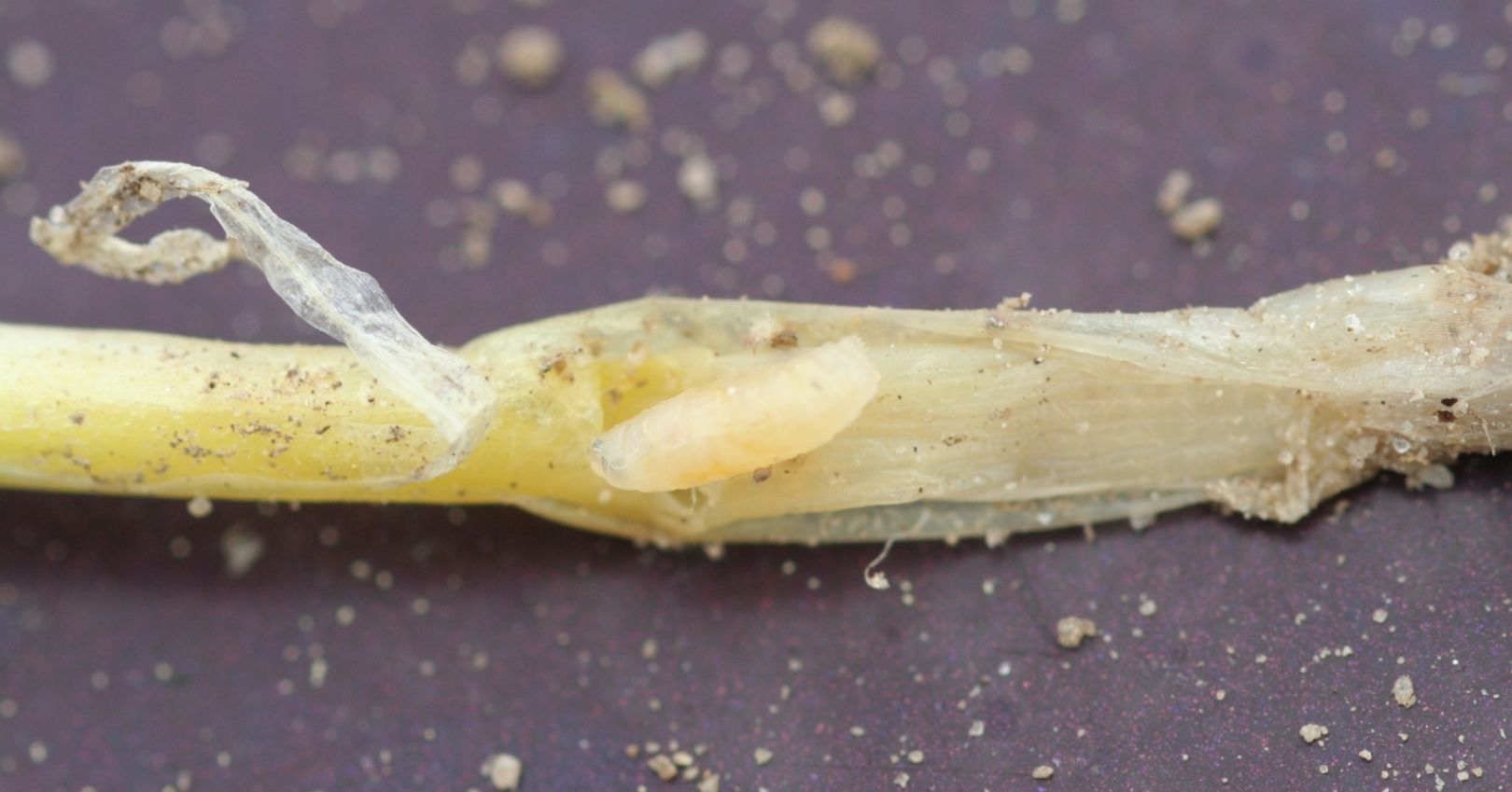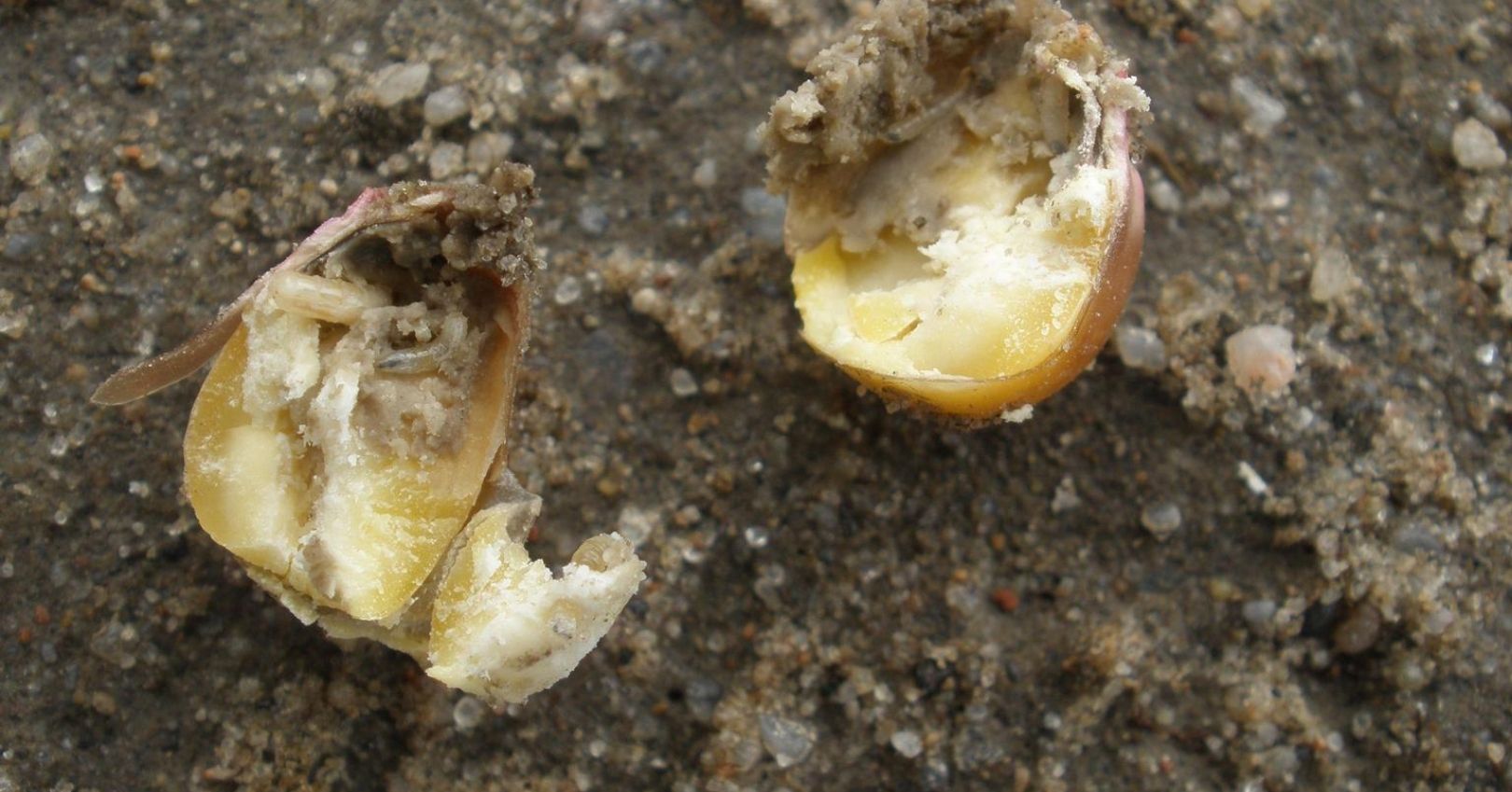Seedcorn Maggot



Description
Adult: Seedcorn maggot adults (flies) are about 0.2 inches (5 mm) long with gray to brown bodies. They resemble houseflies but are about half their size and overlap their wings at rest.
Egg: White, elongated; deposited in soils rich in organic and decaying matter and/or on seeds and seedlings.
Larva: Maggots are legless, tapered, about 0.25 inches (6 mm) long, and yellowish-white in color. Head-ends are wedge shaped with small black mouth hooks in front.
Pupa: Oval-shaped, dark brown, about the size of a grain of wheat, and found in the soil.
Life History
Adult flies emerge from overwintering pupae in April and May, and begin mating within 2 to 3 days. Females lay eggs in or on soil and/or on seeds. Eggs hatch in 2 to 4 days, and larvae burrow into seeds to feed on emerging cotyledons and plant roots. After about 21 days, mature larvae pupate in the soil and remain there for approximately 7 to 14 days. A complete generation takes about 3 to 4 weeks and about 2 to 3 generations occur per year.
Damage
Maggots prefer feeding in soils rich in organic and decaying matter (such as manure). Seedcorn maggot feeding can destroy the seed germ and may cause plant tissue to rot. Larvae burrow into the seeds, leaving the plant with insufficient resources to sprout and/or survive. Maggots also attack the underground stems and roots of sprouted corn resulting in weakened seedlings that often die. Seeds and seedlings attacked by seedcorn maggots may not emerge, causing reduced stands which are evident about a week after plant emergence.
Management
Practices that speed up germination and plant emergence will reduce crop losses from maggots.
Cultural
- Handle seeds carefully. Avoid cracking the seed coat. A cracked seed coat provides entry points for maggots and other diseases.
- Avoid planting in soils that are high in undecomposed organic matter.
- Delay planting to allow soil to warm. Warm and moist, but not saturated, soils encourage rapid plant growth and decrease maggot infestation.
- Place seeds at a shallow depth. Shallow planting of seeds in well-prepared seedbeds can enhance germination and emergence.
- Use traps with lures. Yellow or white sticky cards with lures (decaying plant matter, yeast and molasses, enzymatic yeast hydrolyzate, blood and bone meal or fish meal) serve as a monitoring tool to assess pest infestation levels around fields and may serve as a control measure by reducing the adult populations before egg-laying occurs. Search the internet for more information.
◦ AgBio seedcorn/onion maggot trap
◦ ChemTica page on seedcorn maggot - Plant during fly-free periods determined by monitoring (see above).
- Don’t over-water. Seedcorn maggots like moisture.
- Use row covers. Row covers placed over transplants at the time of planting can reduce egg laying.
- Sanitize fields by removing and/or destroying plant residues.
- Rotate crops each season. Maggot populations are generally higher after legumes (e.g., beans and peas, etc.) have been plowed into the soil than when a grass (e.g., corn, rye, wheat) is incorporated.

